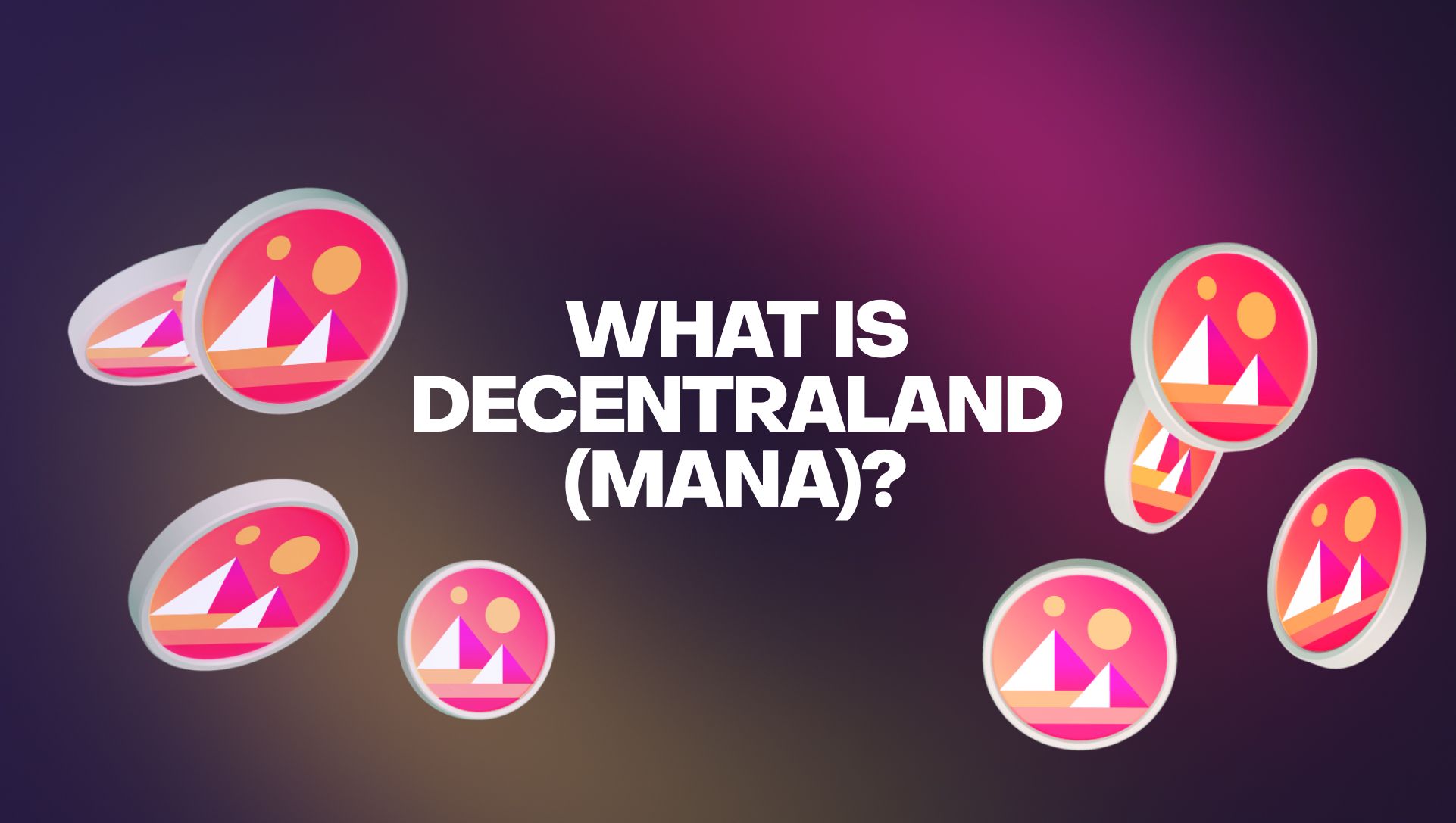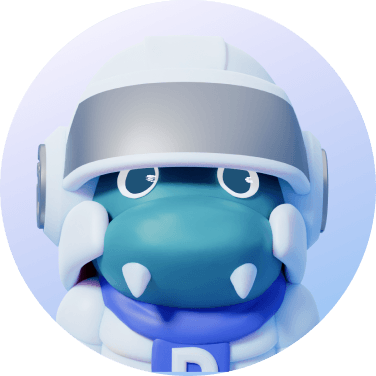
Table of contents
Several industries, such as finance and supply chain management, benefit from innovation in blockchain technology; blockchain has made both systems considerably faster and less prone to third-party manipulation.
Another industry enjoying this innovation and set to expand its use cases is the metaverse gaming industry.
The current forecast for the global blockchain gaming market is a Compounding Annual Growth Rate (CAGR) of more than 70%, to $65.7 billion in 2027, from $4.6 billion in 2022. Although there are many different metaverse options, one of the pioneers in the space is Decentraland.
Decentraland Explained
Decentraland is a virtual reality world that allows players to buy pieces of land (called LAND) within its metaverse. Players can explore Decentraland by playing games, trading digital real estate and wearables, exchanging collectibles, and interacting with other players.
Decentraland is a decentralized platform where owners fully control all LAND purchased or otherwise owned. The platform is built on the Ethereum blockchain, which supports a decentralized governance structure controlled by community members.
The History of Decentraland (MANA)
Created by Esteban Ordano and Ariel Meilich, Decentraland development began in 2015 with the release of Stone Age, a digital world that featured an infinite 2D grid. By 2017, the creators had developed Decentraland and embarked on an initial coin offering (ICO), raising $26 million. Shortly after Decentraland was launched to the general public in February 2020, governments around the world mandated a compulsory lockdown to fight the spread of the COVID-19 pandemic. This situation provided a silver lining for Decentraland, as interest (and prices) spiked on the platform.
At the initial launch, parcels of land sold for around $20. By April 2021, the NFT market had expanded so much that LAND parcels began selling for up to $100,000. In November 2021, Tokens.com subsidiary Metaverse Group purchased a plot for 618,000 MANA, the native currency of Decentraland, or nearly $2.43 million at the time.
From 2021 onwards, many large organizations began to appear in the Decentraland metaverse. For example, in March 2022, Decentraland hosted a Metaverse Fashion Week with appearances from Tommy Hilfiger, Estée Lauder, Dolce & Gabbana, and Perry Ellis. As of October 2022, Decentraland was valued at around $1.2 billion.

How Does Decentraland Work?
The Decentraland ecosystem is powered by MANA — the platform's native token used to buy everything from real estate to virtual assets developed by end users. MANA is an ERC-20 token available on most of the popular crypto exchanges, with a total token supply of 2.19 billion tokens.
As we alluded to earlier, another critical Decentraland asset is LAND. This is an ERC-721 non-fungible token (NFT) that represents a parcel of land in their metaverse. Users can permanently own all LAND, purchase using MANA tokens, or sell them. Each LAND NFT has a record with essential information, including ownership details and history, information on its coordinates, and a parcel manifest that describes the content as set by the owner. One LAND parcel is 52ft x 52ft, or 16m x 16m. Decentraland offers users a maximum of 90,601 LANDS.
Decentraland also features Estates, another NFT in their metaverse. An Estate comprises at least two parcels of directly adjacent and connecting LAND. LANDs must directly connect to form an Estate, and cannot be divided by a road or other parcel.
All Decentraland players must create avatars to function in the metaverse. Avatars may listen to music, visit casinos, attend events, interact with other users, or simply roam.
How Are MANA Tokens Created?
Members of the Decentraland community can mine MANA token blocks using ASIC mining rigs. MANA creation initially launched using the proof-of-work consensus mechanism Ethereum used before The Merge. Like traditional Ethereum transactions, activities involving MANA also require gas fees. The amount of time needed to create new MANA tokens depends on each miner's hash rate and mining setup.
Also, since Decentraland employs a decentralized governance system, members of the community can participate in making changes (including mining changes) via off-chain voting exercises conducted by the Decentraland DAO.

How is Decentraland Different From Other Metaverses?
While many different platforms offer users metaverse activity, Decentraland sets itself apart with advanced functionality. Firstly, users can easily interact as they would outside the metaverse. Each player can perform normal day-to-day functions, enjoying access to events, fashion, and interactions with public figures.
Also, since LANDs are NFTs, all land parcel owners can purchase and maintain ownership for as long as they like. The system records all interactions, including transactions and purchases, making sure that owners reserve exclusive rights to their LANDs. Users can also build on their LANDs as they see fit, without any requirements levied by the ecosystem.
Use Cases of MANA
There are several vital use cases for all Decentraland community members who own MANA. Some of these include:
Trading: MANA is useful in Decentraland for trading LAND and other digital assets. All users looking to purchase anything using MANA must first begin by buying MANA. The crypto community can also use MANA as a store of value or to 'HODL' the token in anticipation of a potential price spike.
Governance: The ecosystem uses MANA as a means of governance. Owning MANA tokens allows users to participate in decision validation and vote authentication within the Decentraland ecosystem and economy.
Advertising: Owners of LAND parcels that receive high traffic from users can enjoy the benefits of advertisement offerings, with all transactions completed via MANA tokens.
Digital Collectibles: The Decentraland ecosystem directly promotes the adoption of NFTs via creation, sales, and purchases. NFTs and other assets traded in the Decentraland marketplace require MANA as the currency of commerce.

Decentraland Network Security
The decentralized method used by Decentraland provides adequate security, as it spreads out critical network functions. Like many Ethereum-based dApps, Decentralization ensures there is no single point of failure in the case of a hack or network breach. The blockchain is secured by miners running thousands of nodes, ensuring the blockchain and all applications it hosts are protected from attacks.
How Do You Store MANA and LAND?
Owners can store their assets in any EVM-compatible crypto wallet. Players looking to hold their MANA tokens long-term may want to use hardware wallets like Ledger for better security. However, MetaMask is the recommended wallet to store both MANA and LAND tokens for ease of use. Anyone can access their LAND or Estate assets using Decentraland's LAND Manager.
The Future of Decentraland
Apart from being one of the first Ethereum-powered platforms that let users trade virtual property, the ecosystem's growth since inception points to more expansion and continued adoption in the future. The platform provides income streams for LAND owners as they interact with and offer value to other users, making it attractive for companies and creators globally. It also exposes brands to a new concentration of current and potential audiences, setting Decentraland up for a bright future if it reaches broad mainstream adoption.
Hold and Trade Crypto On AtomicDEX
AtomicDEX is a non-custodial crypto wallet, bridge, and DEX rolled into one app. The app is now available as a web application on any device, browser, or OS! Store MANA along with ETH, BNB, DOGE, MATIC, and many other cryptocurrencies in your own crypto wallet.
When you're ready to trade, AtomicDEX supports cross-chain swaps between Ethereum and dozens of the most popular blockchain protocols.
Create your own AtomicDEX Web wallet to start HODLing and trading MANA.




